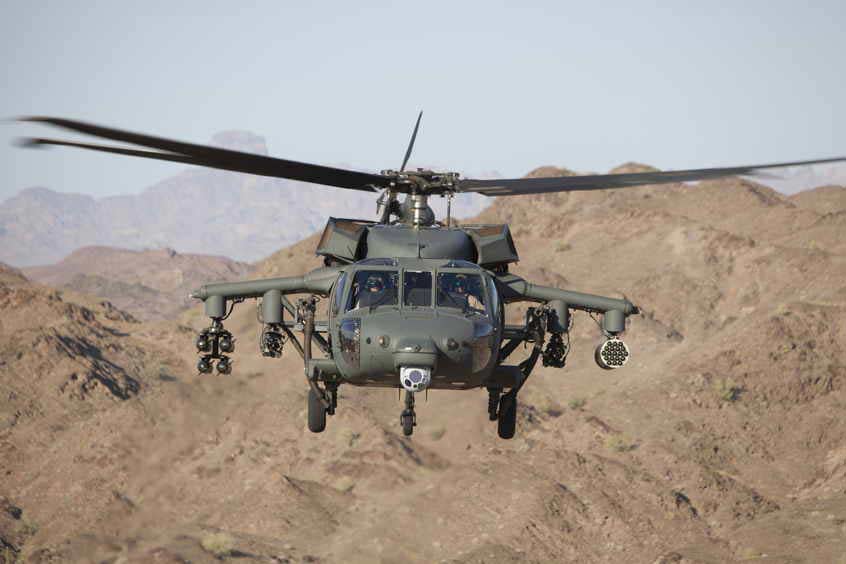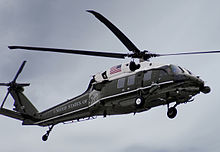Sikorsky S 70: Enhancing Helicopter Efficiency and Adaptability
Sikorsky S 70: Enhancing Helicopter Efficiency and Adaptability
Blog Article
High-Performance Multi-Role Rotorcraft Featuring Advanced Cabin Technologies and Integrated Sensing Unit Solutions
The world of rotorcraft innovation has seen significant improvements in recent times, specifically in the world of high-performance multi-role rotorcraft furnished with cutting-edge cockpit innovations and flawlessly incorporated sensor systems. These innovations have not just boosted the functional capacities of rotorcraft however have actually likewise dramatically impacted contemporary aviation procedures on different fronts. From enhanced goal adaptability to boosted functional effectiveness, the convergence of innovative cabin technologies and incorporated sensor systems has introduced a new period of opportunities for rotorcraft applications. In the complying with conversation, we will certainly explore the development of rotorcraft technology, look into the world of innovative cabin technologies, and take a look at the ramifications of integrated sensor systems on the operational flexibility and efficiency of modern rotorcraft.
Evolution of Rotorcraft Technology
The development of rotorcraft technology has been noted by considerable innovations in the rules of aerodynamics, products, and propulsion systems, shaping the abilities and efficiency of contemporary rotorcraft. Additionally, improvements in propulsion systems, consisting of extra effective engines and ingenious propulsion innovations, have enabled rotorcraft to achieve higher altitudes, faster speeds, and greater payloads.
These developments have not just changed the capacities of rotorcraft however have additionally broadened their applications across numerous industries, consisting of army, industrial, and emergency solutions. The continuous development of rotorcraft innovation remains to drive innovation in the area, pressing the borders of what is feasible and forming the future of vertical flight.
Advanced Cabin Innovations
Building upon the foundational innovations in aerodynamics, materials, and propulsion systems, the realm of rotorcraft modern technology currently moves focus towards introducing Advanced Cockpit Innovations. The assimilation of cutting-edge modern technologies within the cabin environment plays an essential duty in improving the functional capabilities, safety, and effectiveness of modern rotorcraft. sikorsky s 70. Advanced Cabin Innovations incorporate a broad array of functions developed to give pilots with enhanced situational recognition, structured information management, and instinctive control interfaces
Among the crucial innovations in cabin layout is the execution of glass cabins, which change standard analog assesses with high-resolution screens. These digital systems supply adjustable designs, real-time data assimilation, and improved readability, enabling pilots to access vital info at a glance. Furthermore, progressed avionics systems, such as fly-by-wire controls and boosted reality screens, are reinventing how pilots engage with the airplane, enabling exact control and enhanced decision-making capabilities.


Integrating innovative cabin technologies not just enhances pilot performance however additionally adds to general mission performance and safety in complex functional atmospheres. By leveraging advanced modern technologies within the cabin, rotorcraft manufacturers are establishing new requirements for operational excellence and objective success.
Integrated Sensing Unit Equipments
With the development of rotorcraft modern technology, the integration of innovative Integrated Sensor Systems has actually come to be vital in enhancing functional performance and safety and security. These Integrated Sensing unit Systems include a wide variety of innovations that supply critical data for numerous functions such as navigating, monitoring, targeting, and environmental monitoring. By flawlessly incorporating sensing units important source like radars, video cameras, lidar, and infrared systems into rotorcraft, operators can gain from boosted situational recognition, enhanced objective capacities, and lowered pilot work.
One trick benefit of Integrated Sensing unit Equipments is their capacity to collect real-time information and give workable understandings to pilots and goal drivers. For instance, progressed radar systems can identify and track targets over cross countries, allowing for early risk detection and efficient action preparation. Additionally, integrating infrared and electro-optical cams makes it possible for rotorcraft to perform reconnaissance and security objectives with precision and precision.
Essentially, the assimilation of cutting-edge sensing unit modern technologies right into rotorcraft not only improves functional efficiency but additionally adds dramatically to total objective success and team security. As rotorcraft remain to evolve, the role of Integrated Sensor Systems will certainly stay at the center of innovation in the aerospace industry.
Operational Adaptability and Effectiveness
Enhancing operational adaptability and effectiveness in rotorcraft is an all-natural development from the integration of advanced Integrated Sensing unit Equipments. By leveraging the information and insights supplied by these advanced sensor systems, rotorcraft can enhance their performance across different objectives and settings.
Functional convenience includes the capability of rotorcraft to adapt to different duties and situations efficiently. With sophisticated cabin modern technologies and incorporated sensor systems, rotorcraft can seamlessly change in between tasks such as search and rescue, medical evacuation, security, and a lot more. This versatility improves the rotorcraft's capability to fulfill diverse operational requirements without requiring substantial reconfiguration.
Efficiency in rotorcraft operations is crucial for optimizing mission efficiency and source application. Integrated sensor systems play a pivotal duty in boosting operational efficiency by providing real-time data on climate condition, terrain mapping, target monitoring, and extra. This data allows pilots to make enlightened choices quickly, maximize flight paths, conserve gas, and boost general goal performance.
Effect on Modern Air Travel Procedures

In addition, the combination of sophisticated sensing units facilitates enhanced goal preparation and implementation, enabling rotorcraft to execute a variety of jobs with enhanced precision. From search and rescue procedures to aerial firefighting and regulation enforcement goals, the capabilities of contemporary rotorcraft furnished with sophisticated cockpit modern technologies and incorporated sensor systems are unparalleled.
In addition, the effect of these developments prolongs beyond functional effectiveness to cost-effectiveness and sustainability. By optimizing flight paths, gas consumption, and maintenance schedules, high-performance rotorcraft outfitted with sophisticated cockpit modern technologies and sensing units add to reducing functional costs and ecological effect, making them vital properties in modern aviation operations.
Verdict
To conclude, the high-performance multi-role rotorcraft with advanced cockpit modern technologies and incorporated sensor systems represents a substantial evolution in aviation modern technology. These technologies improve functional versatility and effectiveness, ultimately impacting modern-day air travel procedures in a positive way. The combination of these innovative technologies allows for enhanced capabilities and performance in numerous objective circumstances, showcasing the proceeded improvement of rotorcraft innovation in the air travel sector.
The realm of rotorcraft innovation has actually seen remarkable innovations in current times, especially in the world of high-performance multi-role rotorcraft furnished with advanced cabin innovations and perfectly incorporated sensor systems. From improved objective adaptability to enhanced functional performance, the merging of sophisticated cabin technologies and integrated sensing unit systems has ushered in a brand-new period of opportunities for rotorcraft applications. In the adhering to discussion, we will check out the evolution of rotorcraft modern technology, dig into the realm of innovative cockpit technologies, and examine the implications of integrated sensor systems on the operational adaptability and performance of modern rotorcraft.

Report this page